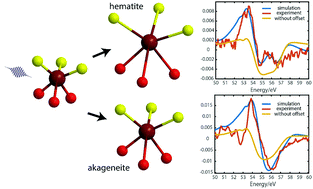We use transient extreme ultraviolet (XUV) reflection absorption spectroscopy to study polaron formation on hematite and akaganeite surfaces. We observed a reduction in the offset of the imaginary refractive index (κoffset) that was attributed to the photoemission cross-section. The difference in the κoffset reduction indicated that deeper-trapped polarons were formed in hematite than in akaganeite.

